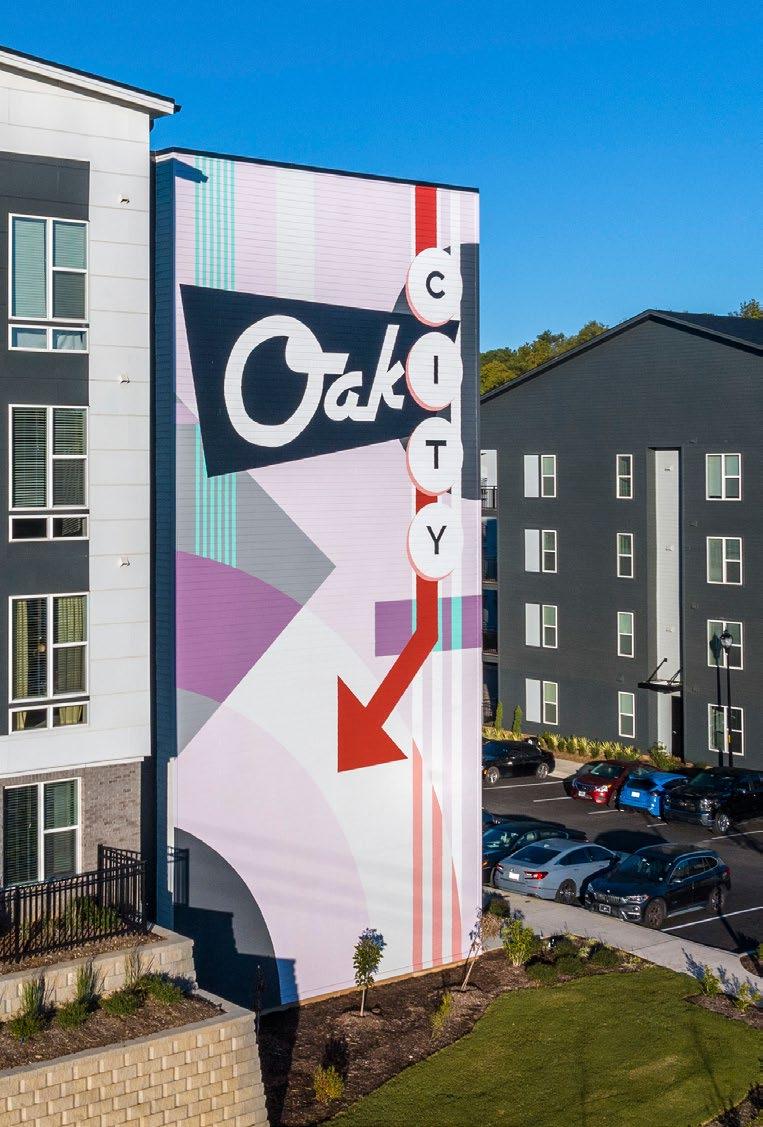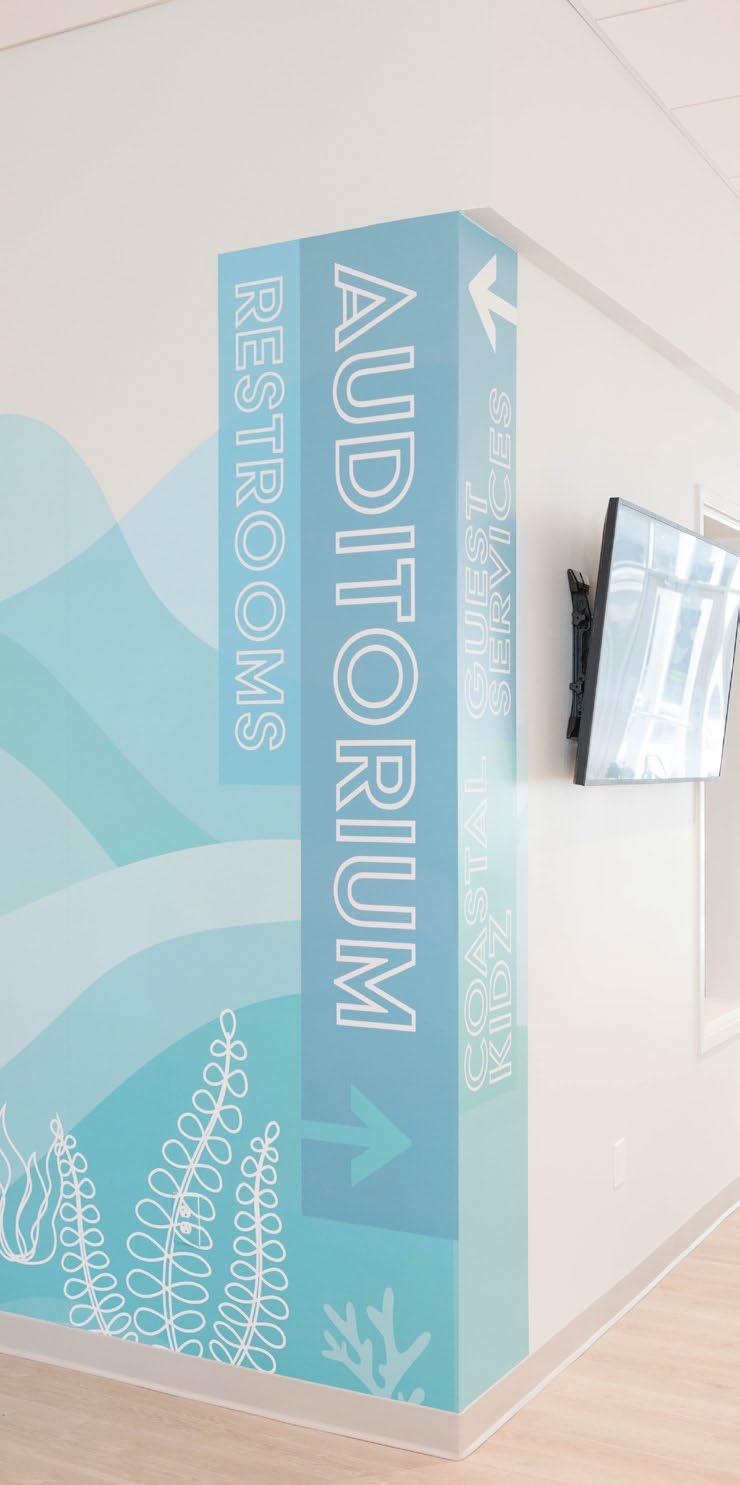

cultivating connections
PEOPLE PLACES
WHAT DO WE DO?
connect the built environment to the human experience
Experiential Graphic Design (EGD) transcends mere color palettes and logos; it breathes life into the very fabric of your space. No longer limited to the realm of multi-million dollar enterprises, EGD touches our lives daily, weaving through our schools, hospitals, airports, offices, hotels, museums, and churches. These meticulously curated environments blend graphic and architectural elements seamlessly, marrying functionality with identity to craft genuine and immersive experiences for all who encounter them.
Our team of experts is well-versed in the nuances of visual communication, seamlessly navigating the spectrum from brand identity to Experiential Graphic Design. We aim to shape how individuals engage, comprehend, navigate, and connect within your space. Our skillful orchestration of identity, wayfinding, storytelling, and placemaking creates a seamless conveyance of information in an accessible, captivating, and unforgettable manner. Our holistic approach to visual communication draws inspiration from your unique vision and cultural essence, beginning with initial concepts and resonating throughout the entire built environment journey.
ABOUT US
our team
WE CAN STEP IN WHEREVER:
No matter where you are in the process we can step in work under your existing logo or brand identity or start from scratch.
SEAMLESS INTEGRATION:
We integrate seamlessly with interiors, architecture and planning teams to visually represent your unique culture and brand throughout your space.

Kelly Kopacka
SAY HI! kellykopacka@ls3p.com
LS3P’s Experiential Graphics Manager Kelly Kopacka brings over a decade of experience in designing for the built environment, with a diverse portfolio that includes museum exhibits, signage, and wayfinding solutions for both national and international clients. Kelly is known for her commitment to accessibility and creating thoughtful, impactful designs.



services overview
Experiential Graphic Design
We use Experiential Graphic Design principles to create a built environment that connects people to your brand and creates a memorable experience.
A well-designed space can enhance the overall customer experience, create a sense of belonging and community among your team, and build long-lasting relationships to further your business.





Wayfinding
A strong wayfinding system is essential for creating a positive user experience and ensuring that people can easily navigate and understand their surroundings.
1/2. Myrtle Beach Arts District Branding \\ Myrtle Beach, SC
3. OC Tech Nursing & Health Sciences \\ Orangeburg, SC
4. PNC Arena Improvements \\ Raleigh, NC
5. Richmond Sr High \\ Rockingham, NC
6. BItty & Beau’s Franchise \\ Winston Salem, NC
7. NCEES Headquarters \\ Greenville, SC
8. LS3P Office \\ Greenville, SC
By establishing a cohesive and consistent system, we enable users to become familiar with the services and functions of their environment, allowing them to move through the space intuitively and confidently.







Experiential Graphic Design
Our overarching and hands-on design approach capitalizes on existing cultural assets of the building’s end users as the inspiration, with the intention of creating spaces that promote social and environmental wellbeing.
Our design approach is centered on the existing cultural assets of the building’s end users, promoting social and environmental wellbeing. Using Experiential Graphic Design (EGD),
we define how people experience, navigate, and interact with their environment, conveying information and messaging in an engaging and memorable way.
EGD plays a vital role in bridging the gap between the built environment and the project mission, facilitating the connection between people and places through identity, wayfinding, and connection. By creating a branded environment that inspires, engages, and promotes wellbeing, we leave a long-lasting impression in your space.


how can we use egd?
IDENTIFYING
Experiential Graphic Design allows us to create a visual identity that captures the vision, values, and tone of your brand. We begin at the earliest stages of design to understand the driving vision of the project, working with the design team to ensure a consistent and cohesive approach is taken where every graphic expression is intentional, integrated into the architecture, and an extension of your brand. EGD is a way to create a sense of arrival and inform identity about a space.



NAVIGATING
Wayfinding is an alternative and holistic approach to traditional signage, conveying information through a cohesive system of color, type, and visual cues. An intuitive and integrated wayfinding system enhances how people experience the built environment. imple additions of carefully designed wayfinding strategies create an allencompassing sense of place for the user while helping them navigate through the space.

CONNECTING
Experiential Graphic Design connects people to place, to brand, and to one another. It is the integration of experience within the built environment. By visually storytelling and placemaking we are able to connect to history, culture, mission, and identity.







Identifying & Connecting
By visually storytelling and placemaking we are able to connect to history, culture, mission, and identity.
Experiential Graphic Design is fluid in the way that we apply it to our built environment, often achieving and solving multiple design challenges. The leadership and community from Robert Smalls Leadership Academy (Beaufort, SC) wanted their new school environment to be rich and saturated
with the history of their school’s namesake- Robert Smalls and past Principal W.K. Alston. The timeline exhibit includes alternating drywall portals which features graphics that are rich with historical imagery and context- creating a fully immersive experience that creates identity and connects students, staff, and the community to the history of the school.





NAVIGATING
Wayfinding
Wayfinding: the process or activity of ascertaining one’s position and planning and following a route.
The purpose of wayfinding is to create a cohesive and consistent system that allows users to familiarize themselves with the services and function of their environment so they can navigate the space easily, intuitively, and confidently.
Wayfinding may include information about a specific area or amenity, provide direction to move throughout the building or campus, identify a landmark, or notify a user about rules or warnings.
Successful wayfinding extends beyond traditional signage, it includes architectural and interior elements to provide visual cues. This thoughtful design can begin in the earliest stages of design so that it is truly integrated into the built environment.
Sample Pictogram
ADA Signage [Design Intent]
Exterior Monumental Sign [Design Intent]

Exterior Building Sign [Design Intent]

Wayfinding
Our Experiential Graphic Designers will work with your team to create the design intent of interior and exterior signage. “Design Intent” refers to how a sign will look, feel, and functionbut does not include every detail.
What we DO:
Interior wayfinding systems
Branded font types
Custom pictograms
Typicalroom&ADAsigntypes*
Monumental&buildingsignage*
Typicalexteriordirectionalsignage*
Exteriorinformationalsigns*
Coordination with vendors, fabricators, and consultants
*designintentonly
Exterior Directional Signage [Design Intent]


Interior ADA Signage Plan


Wayfinding
EXPERIENTIAL GRAPHIC DESIGN
Exterior Signage Plan

At LS3P, we are design experts. We are not signage fabricators, traffic consultants, or code officials. Our Experiential Graphics team will work with your consultants to ensure the design intent is carried through to the final product.
What
we DON’T do:
ADA Code compliant signage plans
Code compliance review of signage plans
Interior signage schedules
Exterior site and campus signage plans
Exterior traffic and regulatory signage
Specialty exterior signage
Vehicular wayfinding plans
DOT compliance review


Exterior Regulatory Signage

